This review contains the sample images taken with DiffuseiT flash reflector (best flash diffuser rating: 8.48). We tested various angles, as well as matte and glossy sides of the reflector.
When bouncing the light off of ceiling and walls, the results greatly depend on the setting you shoot in. There is a reference image below showing the shadows produced by the flash head pointing into the ceiling with no diffuser attached to it. This should allow you for making a better judgment on how DiffuseiT affects the final result.
In the following test images, camera is located about 6 feet (1.8 m) from the mannequin. The ceiling is about 5 feet (1.5 m) above the camera.
The flash is slid into the camera's hot shoe. The flash head is vertical and rotated 90 degrees. Flash zoom is at 50 mm. No flash bracket is used.
 |
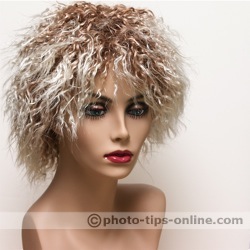 |
|
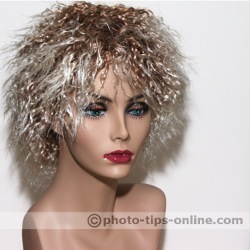 |
|
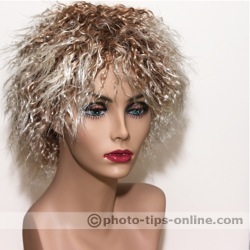 |
|
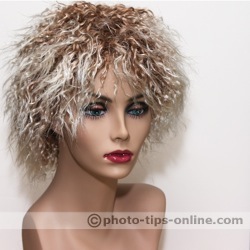 |
|
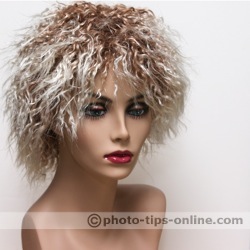 |
As expected, having the diffuser set at "full power," which is at a 45 degree angle, produces rather harsh shadows. The result, however, is already better then the direct flash. This is due to a bigger size of the diffuser comparing to the flash head itself and the light spill, which is minor, but still adds some light reflected off of the ceiling to the image.
Increasing reflector's angle changes the ratio between the light bounced off of the ceiling and the light reflected by DiffuseiT, producing softer shadows, as the ceiling becomes the main light source.
Going beyond the vertical position (90 degrees) still directs some light towards the subject. As you can see in the 110 degrees position test shot, the shadows from the fill light are noticeable, but not very pronounced. We also did a 135 degrees test, but the result was already not distinguishable from the plain ceiling bounce.
To compare the matte and glossy sides of the reflector, we had the flash set to the manual power. DiffuseiT is in the 45 degree position.
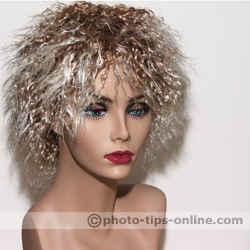 |
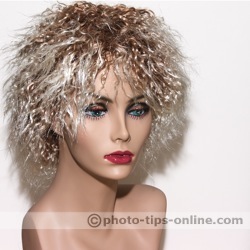 |

|

|
Assuming that the flash gives us reliable exposure, we can conclude that the difference between the images produced by the matte and glossy surfaces of the reflector are subtle. The histograms help you see the actual difference, which is about a quarter of a stop.